Website age verification may seem like a complicated thing to set up, but with the right tools, it’s anything but.
In fact, including an age verification popup or age gate on your website can be done in just a few easy steps.
In this guide, we’ll walk you through the following:
- What is website age verification, and what are age gates.
- Websites that might need to set up website age verification.
- How to set up website age verification.
So first things first, what is website age verification in the first place?
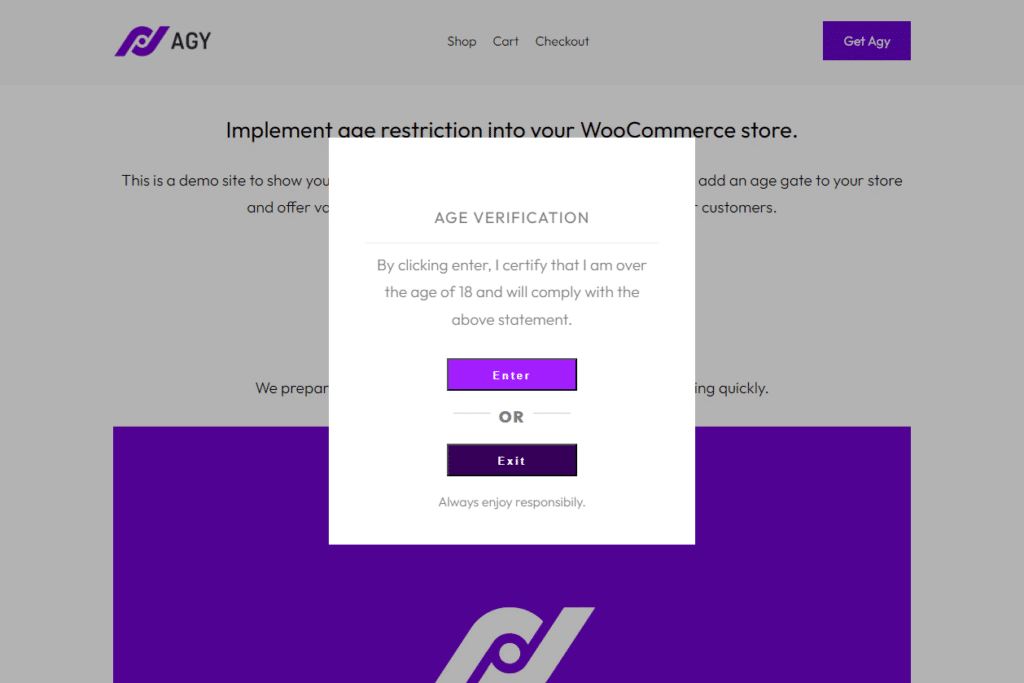
Table of Contents
What is website age verification, and what are age gates
Website age verification confirms that a user accessing a website meets the minimum age requirement set by the website owner or by legal regulations.
This is commonly added to websites containing age-restricted content, such as those selling alcohol, tobacco, or adult products, and websites with adult or explicit content.
Age verification aims to prevent minors from accessing inappropriate or harmful content and comply with legal requirements in certain jurisdictions.
What are age gates?
Age gates are one of the most common and basic methods used for age verification on websites.
They typically appear as pop-up windows or landing pages that require users to enter their date of birth, confirm they are above a certain age, or sign in with an already age-verified account.
Sometimes, the age gate might present the user with a simple ‘yes’ or ‘no’ question, asking if they are of the age required to access the website’s content.
So now we know what website age verification is, but what kinds of websites might benefit the most from it?
Websites that might need to set up website age verification
Age verification is important for protecting minors from age-restricted content and ensuring that businesses comply with legal age requirements.
But some businesses, in particular, would find adding an age check useful for their website or online store.
Websites selling alcohol or other age-restricted products
Online stores selling alcoholic beverages or vaping supplies often require age verification to ensure compliance with legal age restrictions.
For example, the Budweiser and Jack Daniel’s websites use age gates to confirm that visitors are of legal drinking age before granting access to the site.

Pharmaceuticals and supplements
Websites selling prescription medications, over-the-counter drugs, or age-restricted dietary supplements might need age verification to prevent misuse or unauthorized purchases.
Age-restricted events or venues
Websites promoting or selling tickets to age-restricted events, concerts, or venues, such as nightclubs, may require age gates to ensure attendees meet the minimum age requirement.
Ticketmaster, for example, may ask users to confirm their age when purchasing tickets for 18+ or 21+ events.

Social media platforms or apps
Some social media platforms or apps with age restrictions may implement age verification measures to ensure only users above a certain age can create accounts and access content.
For instance, Facebook requires users to be at least 13 years old to create an account.
Online communities or forums
Websites hosting online communities or forums discussing sensitive topics may require age gates to prevent underage users from accessing inappropriate content.
A popular example is Reddit, where certain age-restricted subreddits ask users to confirm their age before granting access to the content.
Educational websites
Websites providing educational content related to sexuality, reproductive health, or mental health may need age verification to ensure the information is accessible only to the appropriate age group.
Online contests or promotions
Websites hosting contests or promotions that involve age-restricted prizes or participation requirements may need to implement age verification to ensure entrants meet the eligibility criteria.
Companies like Coca-Cola or Pepsi may use age verification for sweepstakes or contests with age-restricted prizes, such as trips or event tickets.
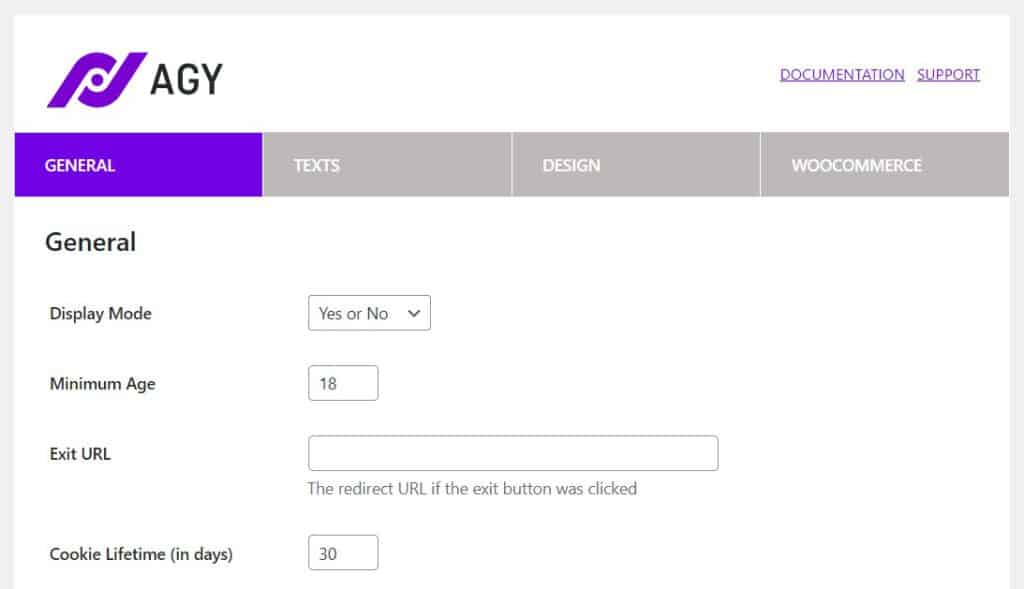
How to set up website age verification
Adding age verification to your ecommerce store or website is essential for businesses selling age-restricted products or services.
To implement age verification effectively, you’ll likely need a plugin that seamlessly integrates with your website platform, whether WordPress/WooCommerce, Squarespace, or another platform.
These plugins simplify setting up age gates or verification systems on your site, ensuring a smooth user experience while maintaining compliance with legal age requirements.
If your site is built on WordPress, we recommend the plugin Agy, and here’s why.
Agy
An easy way to add age verification to your WooCommerce store.
Add age verification to your website with Agy
Agy is a powerful age verification plugin designed for WordPress websites and WooCommerce stores.
Agy allows you to add a secure and reliable age gate to your entire website, product categories, or specific products with just a few clicks.
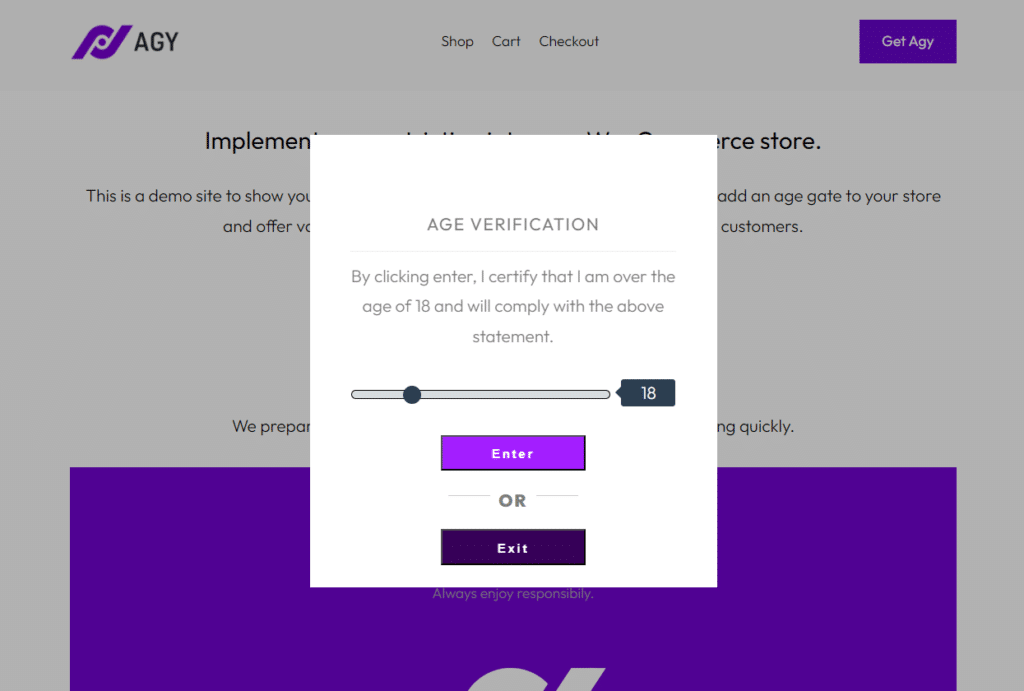
With Agy, you can achieve the following:
- Customize the age verification popup’s content, design, and verification methods.
- Add age verification to WooCommerce products.
- Add age verification to WordPress pages and posts.
- Integrate with Klarna Sofort Ident API for advanced verification.
- Exclude specific content from age verification.
- Ensure mobile-friendliness and SEO compatibility.
Let’s get a little more specific.

Add age verification to WooCommerce products
With Agy, you can easily add age verification to specific products or product categories in your WooCommerce store. This ensures that only customers who meet the minimum age requirement can access and purchase age-restricted products.
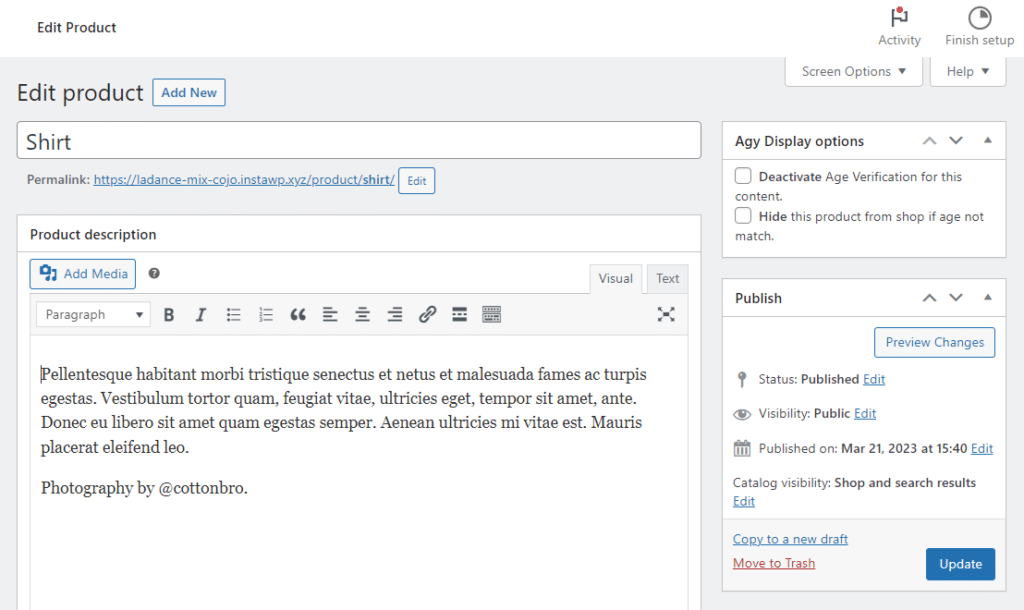
By implementing age verification on a product level, you maintain compliance with legal age restrictions while providing a seamless shopping experience for your customers.
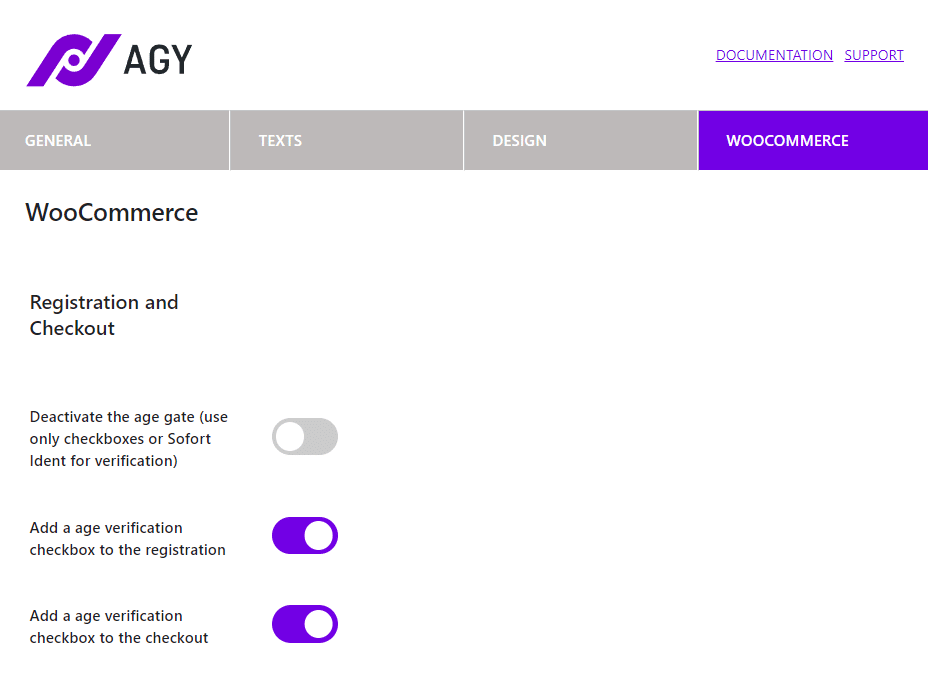
Add age verification to WordPress pages and posts
Agy also allows you to add age verification to your WordPress pages and posts. This feature is particularly useful for websites with age-sensitive content that should only be accessible to users of a certain age.

By adding age gates to specific pages or posts, you can prevent underage users from accessing inappropriate or restricted content, ensuring a safer browsing experience for all visitors.
How to use Agy for age verification on your WordPress website
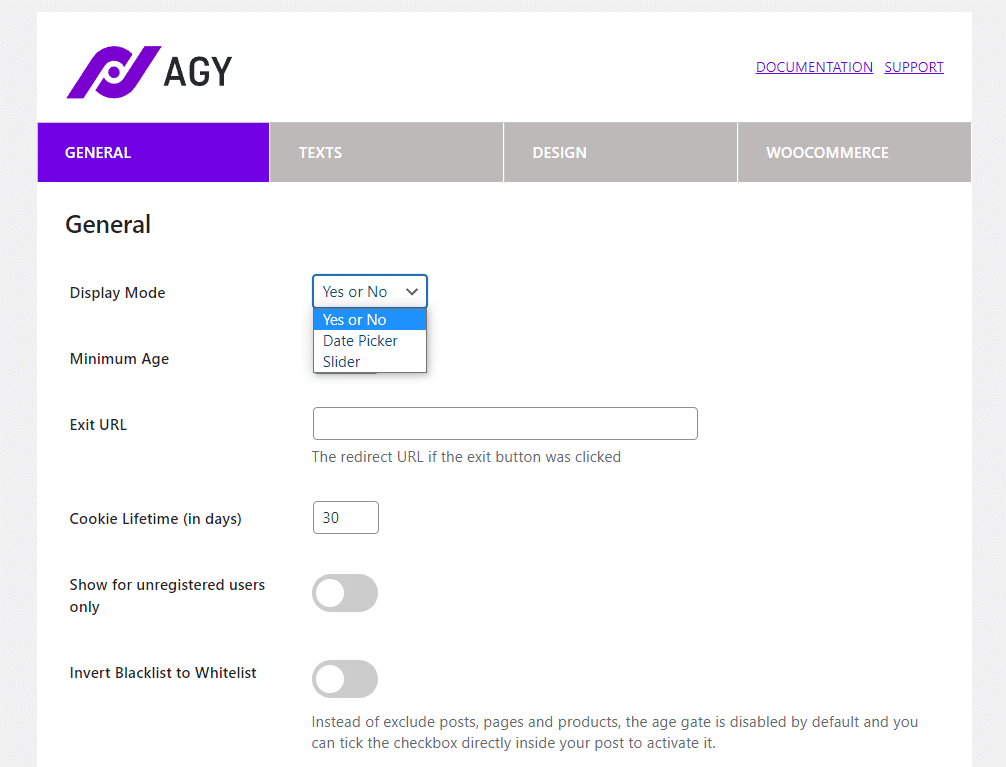
Agy offers three options for verifying your customers’ minimum age:
- A simple Yes/No or Enter and Exit buttons.
- A Date picker so your customers can age verify via their birthdate.
- An age verification slider, which customers can use to confirm their age.
Additionally, Agy provides extensive customization options, allowing you to modify the age verification popup’s appearance, including the background color or image, logo, layout, font, button colors, and more.
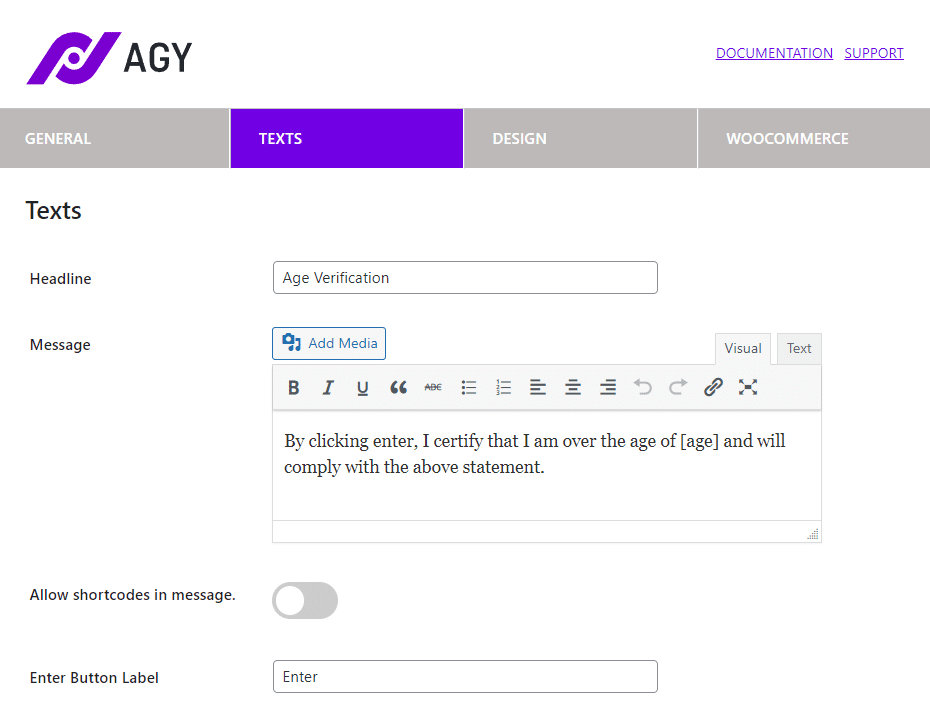
You can also customize the headline, message, button text, and other content within the popup.
With Agy, you can age-restrict user registration, checkout, and specific products, giving you complete control over the age verification process on your WordPress website.
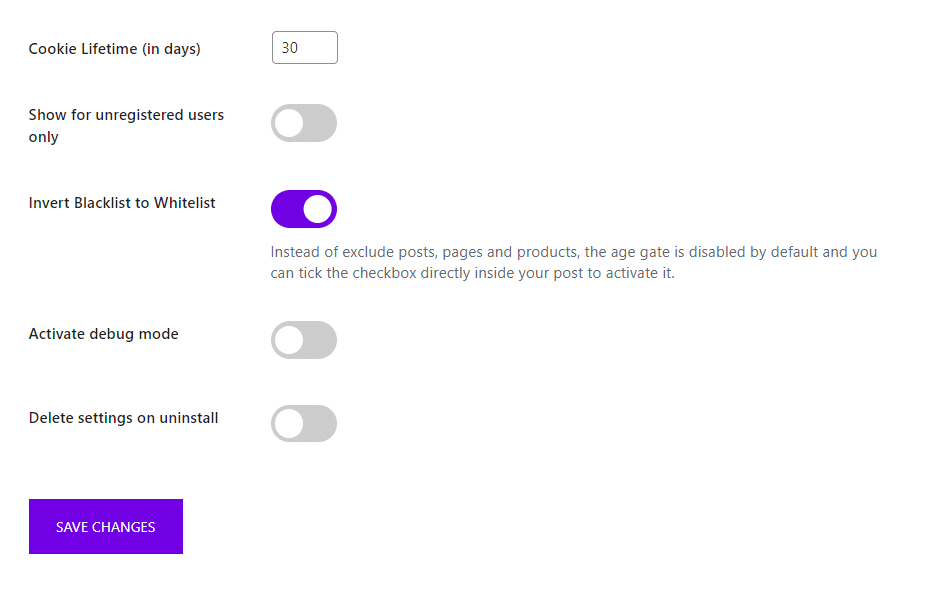
Create website age verification today
Implementing age verification on your website is crucial for ensuring compliance with legal age restrictions and providing a safe browsing experience for your visitors. This article explored various use cases for age verification, such as online stores selling age-restricted products, pharmaceuticals, supplements, and events.

We’ve also introduced Agy, a powerful age verification plugin designed specifically for WordPress websites and WooCommerce stores. With Agy, you can add age gates to your entire website, specific product categories, or individual products, ensuring that only eligible customers can access and purchase age-restricted items.
So if you want to protect your website, comply with legal requirements, and create a safe environment for your visitors with Agy’s age verification solutions, don’t wait.
Add a secure, reliable, and user-friendly age verification system for your WordPress website or WooCommerce store with Agy today.
Agy
An easy way to add age verification to your WooCommerce store.